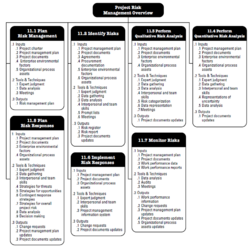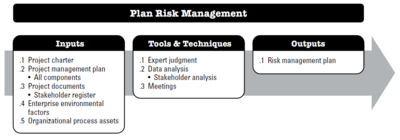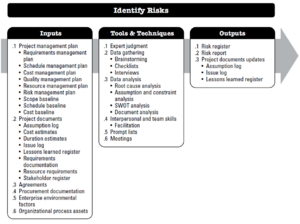A Guide to Risk Management in Construction Projects
Developed by Jokin Brito
Contents |
Abstract
Throughout history, construction has been one of the most revenue generating industries in the world and like many other businesses, is being transformed to meet the highest demands of the twenty-first century. Only in the United States, more than 11.1 million people were employed by the construction industry in 2018[1], the industry spending topped $1.23 trillion in 2017[2] and it accounted for between 7% of total U.S. GDP.[3] Furthermore, today's construction industry involves more dynamic and uncertain planning than ever before. Decision-makers and project managers require better knowledge and systematic tools, not only in project management, but also in risk management, a discipline that has a special complexity in construction projects. This article has the goal of giving project managers and decision-makers within construction industry a more detailed guide to fulfill the needs of any project they manage, where they can identify and reduce cost and time over-runs and security risks, in order to optimize the chances of project success. The guide follows the Project Management Institute (PMI) standards in the PMBOK® Guide.
Background
Structure of this article
Construction Industry
The size of construction projects has outgrowed the industry's capacity to manage complex problems under conditions of uncertainty. Risk management in large scale projects becomes a more important part of overall construction management. Each project is very different from each other and they can't be managed in a systematic way, such as in other industries, thus risk management has always been a more trial-and-error method, which requires symbolic reasoning. Empirical knowledge plays a major role for decision-makers and project managers in every stage under uncertainty and many problems in the industry are not very well defined so the risks that this problems entail are much more difficult to define.
In this article the focus is on giving a more systematic way of evaluating and defining risks on any construction project, helping project managers to base their decisions on the standars in the PMBOK® Guide and in the experience of previous projects.

Project Risk Management
Project Risk management includes the processes of conducting risk management planning, identification, analysis, response planning, response implementation, and monitoring risk on a project. The objectives of project risk management are to increase the probability and/or impact of positive risks and to decrease the probability and/or impact of negative risks, in order to optimize the chances of project success.[5].]]
The Project Risk Management processes according to the PMBOK® Guide are:
- Plan Risk Management
- Identify Risks
- Perform Qualitative Risk Analysis
- Perform Quantitative Risk Analysis
- Plan Risk Responses
- Implement Risk Responses
- Monitor Risks
The goal of this article is to provide guidance on each one of this processes, applied to any construcion project.
Key Concepts
All projects have a difficulty degree and a risky level that aim to deliver benefits and achieve certain goals. Even though this barely happens in the construction industry, organizations should always choose to make decisions in a controlled manner, balancing cost and benefit. When risks of any project are not well managed, they have the potential to deviate the project from the original plan and fail to achieve the defined objectives.
In every project, risks exist at two levels:
- Individual project risk Uncertain event or condition that, if occurs, has an effect on one or more project objectives. When these risks are unmanaged, it may result in problems such as delay, cost overruns, performance shortfall or loss of reputation. Opportunities that are captured can lead to benefits in the same categories.
- Overall project risk Uncertainty of the project as a whole, representing the exposure of stakeholders to the implications of variations in project outcome, both positive and negative. A good management of these risks, aims to keep project risk exposure within an acceptable range, maximizing the probability of achieving overall project objectives.
The aim of project risk management is to ensure that all types of risk are considered and that projects risks are understood in a wider context. Trends and ememerging practices for Project Risk Management include but are not limited to:
- Non-event risk: The two types of non-event risks are variability risk, where uncertainty exists about some key characteristics of a planned event or activity or decision. And ambiguity risks, where uncertainty exists about what might happen in the future.
- Project resilience: These emergent risks are better known as unknowable-unknowns and they can be tackled through developing project resilience. This requires each project to have an specific risk budget for known risks, flexible project processes that can cope while maintaining overall direction of the project, empowered project team that is trusted to get the job done with agreed-upon limits, frequent review of early warning signs and clear input from stakeholders to clarify areas where the project scope or strategy can be adjusted in response to emergent risks.
- Integrated risk management: Projects may be part of a program or portfolio, where risks also exist and should be owned and managed at the appropiate level. Some risks can be managed by the project team or manager but some risks may escalete to a higher level. A coordinated approach to enterprise-wide risk management ensures alignment and coherence in the way risk is managed across all levels.
Each project is unique and it is necessary to tailor the way Project Risk Management processes are applied. These considerations include project size, project complexity, project importance and development approach.
Application
Plan Risk Management

This is the process where the risk management activities are defined, ensuring that the degree, type and visibility of risk management are propotionate to both risks and the importance of the project to the organization and other stakeholders. The process is defined once or at predefined points in the project. It may be necessary to revisit this process in a major phase change or if the project scope changes significantly.[5].
Inputs, tools and techniques and outputs are predefined in this process as shown in figure 2 and they should be aligned with the project integration management process of the PMBOK® Guide. It should result on strategies and methodologies that should be followed to manage the risks, roles and responsabilities of each team member, the funding needed to perform these activities and defined risk categories. The definition of risk probability and impacts, which is usually arranged in a scale of five levels is very important, in order to understand and classify the impact that the identified risks can make on the project. The scale should include the probability of occurence, the cost of each level of probability in case of any event and the description of the impact on the project.
Reporting formats and tracking documents should also be elaborated to simplify how risks will be communicated.
Identify Risks

This is the process where the team should identify probable risks that could have both positive and negative impact on the project and gather them according to the risk plan previously done. This process is performed throuhgout the project. The inputs, tools & techniques and outputs that the team should follow are shown in Figure 3.
In this process is very important to involve the project team so so they can develop and maintain a sense of ownership and responsibility for identified individual project risks, the level of overall project risk, and associated risk response actions. In construction projects, the previous experience of each member of the team is specially important in risk identification, a brainstorming meeting could be very helpful to create a list of possible threats or opportunities. Identify Risks is an iterative process, since new individual project risks may emerge as the project progresses through its life cycle and the level of overall project risk will also change.[5].
Even though, every project is different and specially construction projects have a high level of uncertainty, external resources could also be taken into account, such as academic studies, industry studies and records from the same organization. The target is to have a list of every possible risk so the project management couls categorize them according to the risk plan.
It is also important that if any risk happen, the team have a prepared document regarding lessons learned, so this could help in future projects and identifying potential threats and opportunities. It can also be updated with information on techniques that were effective in identifying risks to improve performance in later phases or other projects.
Limitations
References
- ↑ Bls.gov. (2019). Employed persons by detailed industry, sex, race, and Hispanic or Latino ethnicity. [online] Available at: https://www.bls.gov/cps/cpsaat18.htm [Accessed 17 Feb. 2019].
- ↑ Construction spending in the United States from 1996 to 2017, s. (2019). U.S. construction spending: public and private sectors 2017 | Statistic. [online] Statista. Available at: https://www.statista.com/statistics/226355/us-public-and-private-sector-construction/ [Accessed 17 Feb. 2019].
- ↑ 2018 FMI Overview, Featuring FMI’s Fourth Quarter 2017 Construction Outlook. (2018). [online] Available at: https://www.fminet.com/wp-content/uploads/2018/01/Overview2018_FINAL-1.pdf [Accessed 17 Feb. 2019].
- ↑ A guide to the project management body of knowledge. (2017). 6th ed. Newtown Square, Pennsylvania, USA: Project Management Institute, pp.396
- ↑ 5.0 5.1 5.2 A guide to the project management body of knowledge. (2017). 6th ed. Newtown Square, Pennsylvania, USA: Project Management Institute, pp.395-458
- ↑ A guide to the project management body of knowledge. (2017). 6th ed. Newtown Square, Pennsylvania, USA: Project Management Institute, pp.401
- ↑ A guide to the project management body of knowledge. (2017). 6th ed. Newtown Square, Pennsylvania, USA: Project Management Institute, pp.409